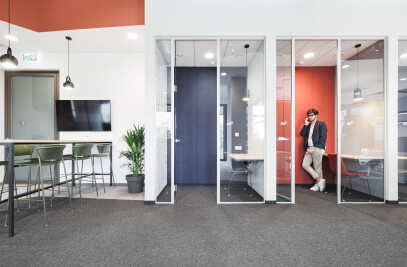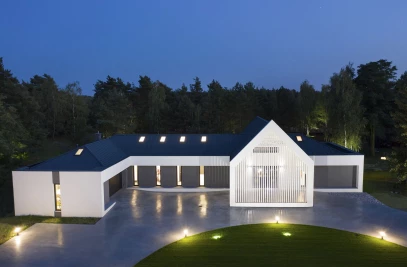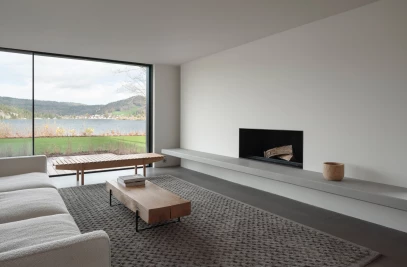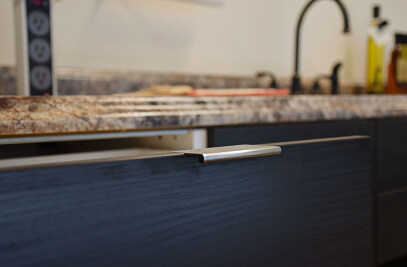The Monroe Street Abbey was envisioned with the pioneering concept of “armature,” as noted American architect Herb Greene described in Buildings to Last —Architecture as an Ongoing Art. This concept seeks not only to restore but to reinvent. It emphasizes the coexistence of historical integrity and modern utility, to make the Abbey an open canvas for community, creativity, and expression. The essence of armature underscores a collaborative ethos, and allows architects, artists, developers, and the community to partake in an ongoing narrative of rejuvenation and reimagining.


Key to the Abbey's revival has been the meticulous preservation of its architectural elements, which ensured that each stone, ornament, and space tells a story of endurance. Amid Phoenix’s new developments, this tactile ornate handcrafted building juxtaposes expansive facades of synthetic materiality. The project team, led by landscape architect Chris Winters Associates, and architects Jones Studio embraced the challenge of integrating modern functionalities, while sustaining the Abbey's historical essence. This included stabilizing the structure with a new steel and concrete decking framework needled into the existing building shell, carefully integrating ADA accessibility, and planning for future phases that promise even more opportunities for community connection and enrichment.


Maintaining the Abbey's existing character required a combination of preservation approaches with consultation from Evergreen Architectural Arts, including stabilizing and slowing the deterioration of finishes in keeping with the ruin's existing aesthetic. Some strategies included pinning, grouting, and mortaring loose pieces for structural stability, repairing masonry and plaster, salvaging and restoring existing windows and doors, and cleaning interior finishes.


The courtyard garden — once the auditorium — now hosts gatherings under the open sky and brings together nature and human creation. Its design was inspired by the Sonoran Desert canyon landscapes. Paving is limited to the minimum deemed necessary for performance and access with decomposed granite completing the ground plane. Native ash trees provide a natural canopy for shade in summer and allow sun in winter. The perimeter is planted with native and arid adapted species that are supported with harvested rainwater. Historically, water was an important ceremonial element of the church and this is recalled with a simple fountain at the main entry that welcomes guests into the garden. The fountain utilizes harvested rainwater that is cleaned by native water plants and provides sensory connection to this precious desert resource.


Team:
Architect: Jones Studio
Landscape architect: Chris Winters & Associates
Civil engineer: Cypress Civil Development/ Rick Engineering Co.
Structural engineer: Slaysman Engineering Co.
Mechanical-plumbing engineer: Associated Mechanical Engineers
Electrical engineer/lighting design: Woodward Engineering
Acoustical consultant: McKay Conant Hoover
Theatrical consultant: Landry & Bogan
Historic preservation consultant: Evergreen Architectural Arts
General contractor: Patry Building Co.
Photo credit: Bill Timmerman


Material Used:
Doors:
1. Arcadia NS212 Standard Narrow Stile alum storefront doors
2. Marvin TruStile modified FL100 single lite door
3. Cornell Visionaire Rolling Grille
Windows:
1. Milgard Windows and Doors, Style Line V250
2. Kawneer 1600 with Guardian SunGuard SNX insulated glazing
Interior lighting:
1. Lithonia Lighting, Downlight, Linear, Striplight, Cylinder
2. Lumen Pulse, Lumen facade, Lumen beam
3. SORAA vivid, par 20
Plumbing fixtures:
1. American Standard, Serin Collection in-wall vessel faucet
2. WS Bath Collections, Unlimited 60 wall mounted sink
3. Kohler Faucets, Purist four-function handshower kit
Door hardware:
1. Assa Abloy
2. CRL straight style ladder pulls
Others:
1. MILE stone, Atelier wall tile
2. Platia Mirror Glass
3. MicNichols Traction Tread stair tread
4. KONE MonoSpace 500 elevator
5. Dunn Edwards paints





















































